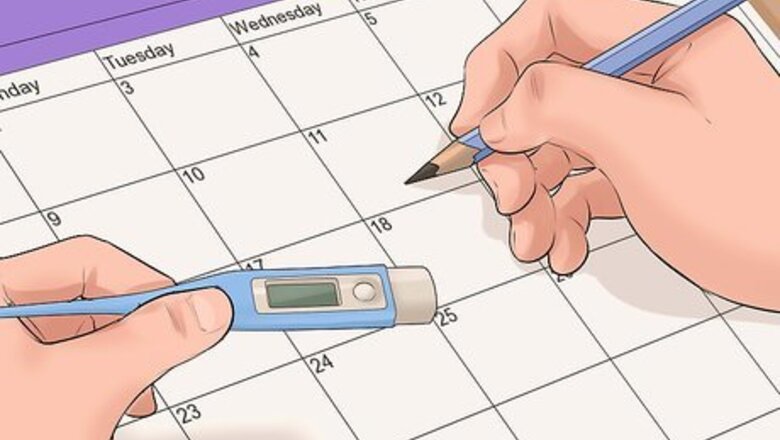
views
Getting Pregnant Using the Sympto-Thermal Method
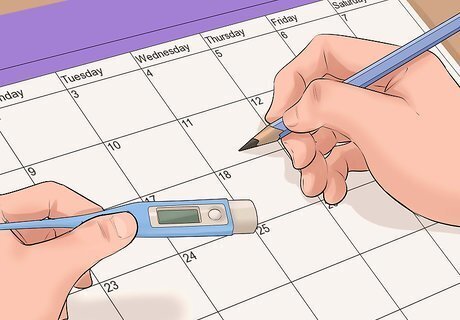
Take your temperature every morning. The "thermal" part of the STM requires that a woman take her core body temperature each morning before getting out of bed. Use a basal thermometer (an especially sensitive thermometer that has a limited range) to get a reading and then record it on a calendar. Depending on the stage of your menstrual cycle, there are slight variations in temperature that can indicate ovulation. Ovulation of an egg means a woman is fertile and able to conceive. There is a 0.5 – 1.0 degree rise in temperature after ovulation. When the temperature is elevated for at least three days, you can safely assume you've ovulated. Basal thermometers are used either in the mouth or rectum. Rectal readings are generally more reliable/accurate, but not necessary. Your basal temperature can change when you are upset, ill, stressed, jet lagged or don't get enough sleep.

Notice ovulation symptoms. The "sympto" part of the STM requires that a woman take note of other physical symptoms of ovulation, such as increased cervical and vaginal mucus production, abdominal cramping, breast sensitivity and mood swings. Monitoring mucus quality and quantity is a particularly reliable sign of ovulation. The hormones that control your menstrual cycle also trigger your cervix to produce mucus, which also collects in the vagina. This mucus changes in quality and quantity just before and during ovulation. You'll produce the most amount of mucus just prior to ovulation. It looks clear and feels slippery — much like raw egg white. With careful monitoring, it's relatively easy to predict your fertile period from these physical symptoms. These physical symptoms can cause discomfort and are sometimes called PMS symptoms or premenstrual syndrome symptoms.
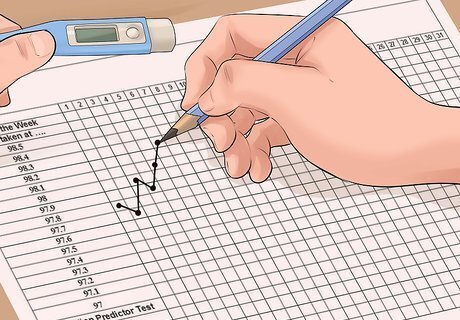
Chart your symptoms and temperatures. The key with STM is to record all your information regarding your daily temperature readings and make note of when you feel the above-mentioned symptoms. You can get ready-made monthly charts from your healthcare provider or a women's health center. As each day's information is written onto the chart, you'll begin to see a pattern develop after a few months. Get a fertility specialist, registered nurse or family planning professional to help you organize and interpret your charts until you get the hand of it. The menstrual cycle is 28 days on average (although some can be as long as 35 days), which doesn't completely synchronize with the months, so expect your fertility periods to occur at slightly different times each month.

Have sex at the most fertile times. For the average woman, the most fertile days of her cycle are from days 10 and 17 — about one week per month. By charting your temperatures and physical signs, you can be even more precise and be able to figure out on which days of the month your highest fertility falls on. From there, you should have vaginal intercourse (with male ejaculation) throughout the fertile period to give yourself the best chance of getting pregnant. Although it only takes a single sperm, most couples take three to six months of sexual activity in order to get pregnant. Keep in mind that sperm frequently live up to two days within the vagina/cervix (and in rare cases as many as five days), so it's possible to get pregnant from having sex a few days prior to ovulation. In comparison, the female egg only lives for between 12 – 24 hours. Thus, once a woman ovulates, there's not much more than a day for sperm to have a chance of fertilization.
Increasing Chances of Pregnancy

Live a healthy lifestyle. Fertility rates drop among couples who live unhealthy lifestyles. Hormone production as well as the health of the eggs and sperm depend on a number of factors and unhealthy living can make a significant negative impact on fertility. Stopping smoking, drinking less alcohol, cutting back on caffeine, eliminating trans fat from your diet and eating more nutritiously can really impact fertility rates and ensure a healthy pregnancy. As a woman, make sure to include enough protein, iron, zinc and vitamins C and D in your diet because deficiencies in these nutrients are linked to longer menstrual cycles and less ovulation. If you're thinking of getting pregnant, limit your daily caffeine consumption to less than 200 mg — about 12 ounces of freshly brewed coffee. Drinking more than two alcoholic beverages per day on average can reduce the quality and quantity of a man's sperm.

Don't get too thin or too big. Although watching your weight is always a good idea to make sure you don't get too heavy and increase you risk of cardiovascular disease and diabetes, being too thin can prevent ovulation or conception. In general, a women needs about 20% body fat or more to conceive and carry a baby. In terms of body mass index (BMI), women should aim to be in the 20 – 24 range, which is healthy and still allows a woman to have some curves. Being obese is problematic for getting pregnant because body fat produces hormones that affect the menstrual cycle and ovulation. Men who are overweight, especially those with lots of belly fat, tend to produce fewer and less healthy sperm.
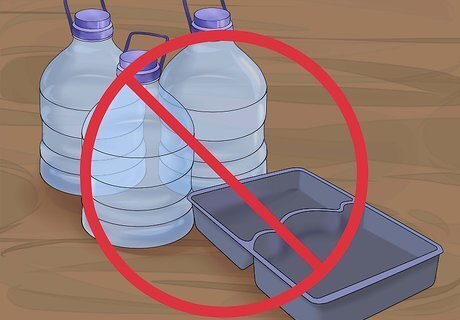
Avoid Bisphenol A (BPA). BPA is found in most plastics and food packaging, such as plastic bottles, Tupperware and cellophane wrap, and can mimic hormones like estrogen. BPA may disrupt the endocrine system and decreases sperm quality and libido in men, as well as reduces egg quality and hormone production in women. BPA may also cause egg abnormalities and increase a woman's chances of suffering a miscarriage. Reduce your exposure to BPA for at least three months before trying to get pregnant (both men and women). Look for "BPA-free" plastic products, especially those that are in contact with food and/or beverages. Don't wrap microwaved food in cellophane or other plastic wraps while cooking. Drink water in ceramic or stainless-steel-lined bottles instead of plastic.













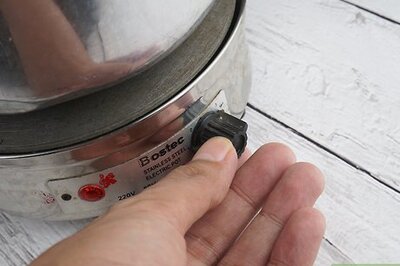






Comments
0 comment